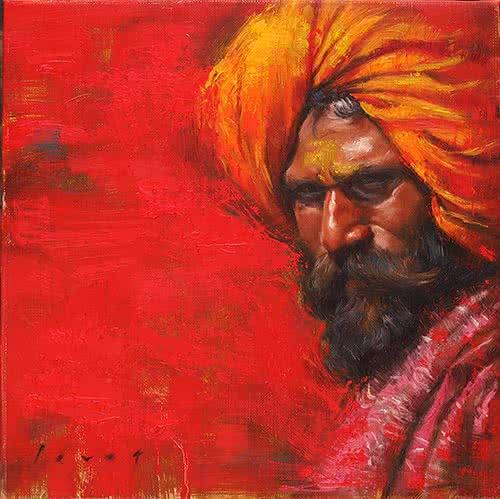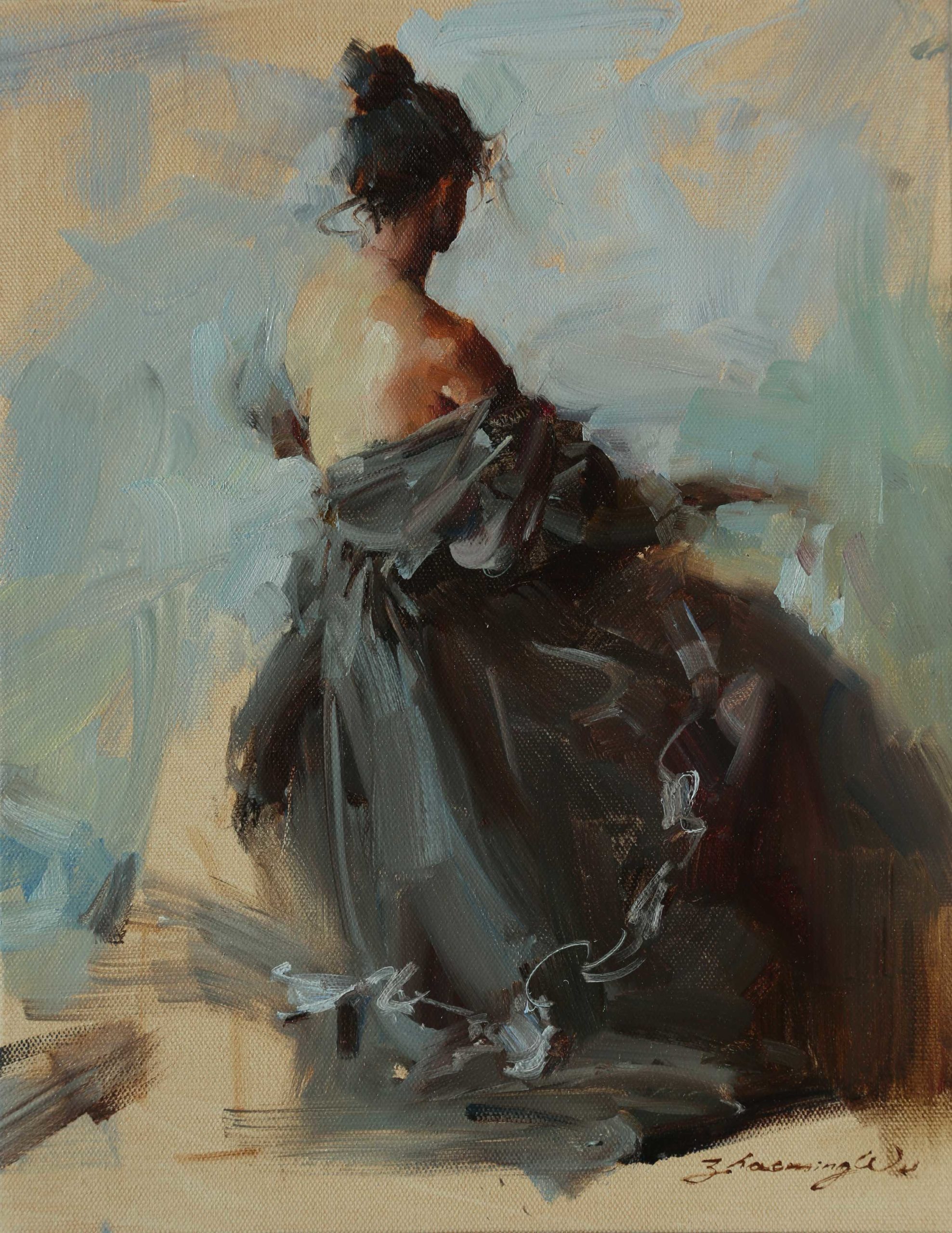Why Figurative Oil Painting Remains an Ageless Selection for Artists
Why Figurative Oil Painting Remains an Ageless Selection for Artists
Blog Article
The Evolution of Figurative Oil Painting: Recognizing Its Historic Relevance and Modern Interpretations
The development of metaphorical oil painting offers as an engaging lens with which to examine the interaction between creative expression and historical context. Contemporary musicians, attracting from this rich heritage, are currently reinterpreting the human figure in ways that test traditional stories.
Origins of Figurative Oil Paint
The origins of metaphorical oil painting can be traced back to the very early Renaissance in Europe, especially in the 15th century. This duration marked a substantial departure from the level representations and stiff forms particular of middle ages art. Artists began to discover naturalism, emphasizing the human figure and its psychological expression. The growth of oil paint enabled greater depth of color and detail, improving the realistic look and vibrancy of their job.

In this transformative age, figures were usually depicted within contextually abundant settings, showcasing not just their physical qualities however likewise their psychological states. Pioneers such as Jan van Eyck and Titian harnessed the tool's versatility, employing layering strategies to attain brightness and texture. This innovation facilitated the representation of complex materials and the subtleties of complexion, contributing to the growth of portrait and narrative scenes.
In Addition, the Renaissance focus on humanism fostered an appreciation for individualism, which subsequently influenced musicians to develop even more relatable and dynamic figures - figurative oil painting. Therefore, figurative oil paint arised as an effective automobile for storytelling and psychological engagement, laying the foundation for future creative activities and styles
Key Historic Movements
Significant historic movements have actually shaped the advancement of figurative oil paint, each contributing one-of-a-kind viewpoints and strategies that broadened the medium's opportunities. The Renaissance marked a turning point, highlighting realistic look and the human type, with musicians like Leonardo da Vinci and Michelangelo pushing the limits of anatomical accuracy and point of view. Following this, the Baroque era brought remarkable contrasts of light and darkness, exemplified by Caravaggio, who instilled religious styles with extreme emotionality.
The 19th century introduced Romanticism and Realism, where musicians such as Delacroix and Courbet tested classical suitables, concentrating on individual expression and daily life. The arrival of Impressionism even more reinvented the tool by emphasizing the impacts of light and shade, resulting in a separation from traditional representation.
In the very early 20th century, activities like Expressionism and Cubism redefined figurative painting with abstraction and the exploration of psychological depth. Each of these movements not only showed the social adjustments of their times but also prepared for modern analyses. The interaction in between these historical movements has produced an abundant tapestry of designs and ideologies, influencing modern artists in their pursuit of catching the human experience on canvas.
Methods and Materials Development

Throughout the Baroque period, techniques such as chiaroscuro and sfumato emerged, improving the emotional vibration of figurative make-ups. Artists started to explore glazes and impasto, controling texture and luminance. By the 19th century, advancements like the use of pre-mixed paints in tubes revolutionized availability, allowing musicians to paint en plein air and record the fleeting impacts of light.
The 20th century witnessed the intro of artificial pigments and mediums, which increased the palette and modified the uniformity of oil paints. Moreover, the expedition of brand-new application methods, such as scheme knives and brushes of differing rigidity, more varied artistic expression. Collectively, these innovations show the advancing relationship in between products, techniques, and the creative vision fundamental in metaphorical oil paint.

Contemporary Analyses
Contemporary analyses of figurative oil painting visite site reflect a dynamic dialogue between custom and technology, where musicians test developed standards and discover varied motifs. This advancement shows up in numerous means, as modern musicians blend classical methods with contemporary concepts, typically attending to social, political, and personal narratives.
Numerous specialists draw inspiration from historic jobs, yet they instill their pieces with contemporary perspectives, using the human kind as an automobile for commentary on sex, society, and identity. Artists progressively try out abstraction, distortion, and multimedias, which allows for a more comprehensive analysis of the number and its context.
In addition, making use of brilliant color schemes and unique structures frequently offers to interrupt conventional viewing experiences, prompting vital engagement from target markets. This shift in emphasis prolongs beyond visual appeals; it mirrors a growing recognition of the complexities of human experience in an interconnected globe.
As figurative oil painting proceeds to advance, it remains an important tool for discovering the nuances of contemporary life, symbolizing both a regard for heritage and a dedication to dynamic thought. The result is a rich tapestry of expression that resonates with the complexities of the modern-day human condition.
Effect On Modern Art
The effect of metaphorical oil paint on modern art is profound, as it has actually continually influenced a myriad of creative activities and practices throughout the 20th and 21st centuries. From Expressionism to Surrealism and past, the expedition of the human number has actually remained a central theme, enabling musicians to share complicated feelings and stories. This focus on metaphorical representation has brought about a re-examination of traditional strategies, resulting in ingenious techniques that mix realistic look with abstraction.
In addition, modern musicians have embraced figurative oil painting as a means to deal with social and political problems, using the medium to test assumptions of gender, culture, and identification. The revival of rate visit this site right here of interest in figurative operate in recent years reflects a longing for connection in an increasingly digital globe, where human experience and feeling are extremely important.
In addition, the discussion in between metaphorical oil painting and modern-day art is noticeable in the jobs of musicians such as Kehinde Wiley and Jenny Saville, who make use of historical referrals while instilling their pieces with contemporary importance. Inevitably, metaphorical oil painting visit our website proceeds to form and redefine modern-day artistic expression, emphasizing its enduring relevance in the art world.
Final Thought
The evolution of metaphorical oil painting underscores its historic significance and adaptability throughout various creative activities. Inevitably, metaphorical oil painting stays an important tool for discovering the human experience, reverberating profoundly in today's digital landscape.
The development of figurative oil paint offers as an engaging lens with which to take a look at the interplay in between creative expression and historical context.Considerable historical motions have formed the development of figurative oil painting, each contributing unique philosophies and methods that expanded the tool's opportunities.As historic motions formed the trajectory of metaphorical oil painting, the methods and materials utilized by artists have also undertaken significant transformations. figurative oil painting.The effect of metaphorical oil paint on modern-day art is extensive, as it has consistently motivated a myriad of artistic motions and practices throughout the 20th and 21st centuries.The advancement of figurative oil paint underscores its historic value and adaptability throughout numerous imaginative activities
Report this page